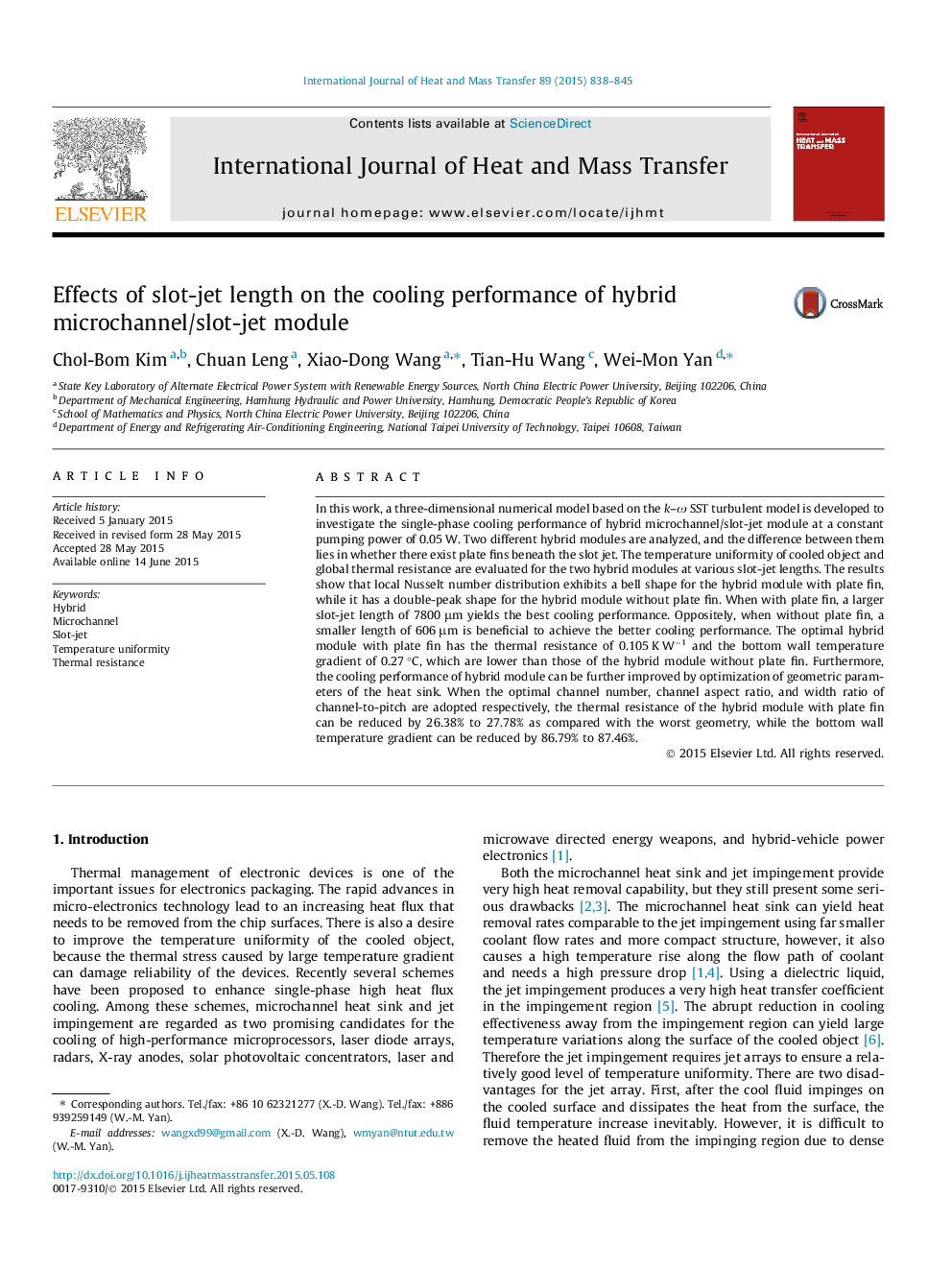| Article ID | Journal | Published Year | Pages | File Type |
|---|---|---|---|---|
| 7056616 | International Journal of Heat and Mass Transfer | 2015 | 8 Pages |
Abstract
In this work, a three-dimensional numerical model based on the k-Ï SST turbulent model is developed to investigate the single-phase cooling performance of hybrid microchannel/slot-jet module at a constant pumping power of 0.05 W. Two different hybrid modules are analyzed, and the difference between them lies in whether there exist plate fins beneath the slot jet. The temperature uniformity of cooled object and global thermal resistance are evaluated for the two hybrid modules at various slot-jet lengths. The results show that local Nusselt number distribution exhibits a bell shape for the hybrid module with plate fin, while it has a double-peak shape for the hybrid module without plate fin. When with plate fin, a larger slot-jet length of 7800 μm yields the best cooling performance. Oppositely, when without plate fin, a smaller length of 606 μm is beneficial to achieve the better cooling performance. The optimal hybrid module with plate fin has the thermal resistance of 0.105 K Wâ1 and the bottom wall temperature gradient of 0.27 °C, which are lower than those of the hybrid module without plate fin. Furthermore, the cooling performance of hybrid module can be further improved by optimization of geometric parameters of the heat sink. When the optimal channel number, channel aspect ratio, and width ratio of channel-to-pitch are adopted respectively, the thermal resistance of the hybrid module with plate fin can be reduced by 26.38% to 27.78% as compared with the worst geometry, while the bottom wall temperature gradient can be reduced by 86.79% to 87.46%.
Related Topics
Physical Sciences and Engineering
Chemical Engineering
Fluid Flow and Transfer Processes
Authors
Chol-Bom Kim, Chuan Leng, Xiao-Dong Wang, Tian-Hu Wang, Wei-Mon Yan,
